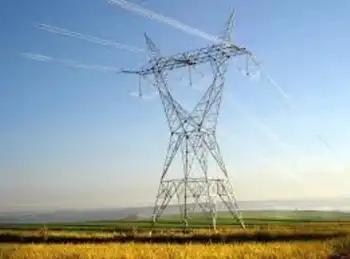Brutal temperatures bring grid brownout, higher death risk
By Knight Ridder Tribune
Arc Flash Training CSA Z462 - Electrical Safety Essentials
Our customized live online or in‑person group training can be delivered to your staff at your location.

- Live Online
- 6 hours Instructor-led
- Group Training Available
The high of 102 at Baltimore-Washington International Thurgood Marshall Airport scorched the previous record of 99 degrees for the same day in 1980. It was the hottest day at the airport in more than eight years. Downtown, heat index readings rose to bout 120 degrees.
There were no immediate reports of deaths in Maryland linked to this latest siege of hot weather. Thirteen Marylanders have died this summer from illnesses triggered or exacerbated by high temperatures, only one of them in Baltimore. In at least 11 of those deaths, the victims already suffered from cardiovascular disease, according to the state office of the chief medical examiner.
Intense heat across the Mid-Atlantic states proved so taxing to the region's power companies that the PJM Interconnection, which manages the grid, ordered a 5 percent voltage reduction about 4 p.m., the first in two years. The voltage cutback affected millions of customers in the Mid-Atlantic portion of the grid.
"A 5 percent voltage reduction is virtually undetectable by customers," said BGE spokeswoman Linda Foy. "It typically reduces demand by 2 or 2 1/2 percent, so it helps keep the system balanced." PJM also asked customers to conserve. That triggered power-saving plans among some of the system's largest consumers, including the state office complex in Baltimore.
"Under an agreement with PJM under such emergencies, the Baltimore State Government Complex at Preston Street engaged two engine generators which shaves 2.4 megawatts off the grid," said Dave Humphrey, spokesman for the state Department of General Services. It was a drop in the bucket.
The August 8 electric consumption numbers were not immediately available, but on the previous day, BGE customers set a summertime power consumption record, using 6,739 megawatts. A typical hourly peak in summer is 5,500 megawatts. Power outages made cooling off more difficult for more than 8,000 BGE customers. Foy said it was too soon to determine the cause.
The worst of the heat might be behind us.
Conditions should improve as the weekend approaches, the daily highs slipping to the high 80s from August 11 into next week. August 8 was the eighth day in the past nine with temperatures of 90 degrees or more, and the 27th day of 90-plus weather this summer. The high temperature at the Maryland Science Center in Baltimore's Inner Harbor was 105 degrees. The last time BWI saw a high of 102 was July 5, 1999, according to the National Weather Service forecast office in Sterling, Va.
Records were also set at Ronald Reagan Washington National Airport in Washington (102 degrees), and Washington Dulles International Airport in Northern Virginia (100). The weather service posted heat advisories nearly statewide for Maryland. Baltimore extended its Code Red Heat Alert, opening 10 cooling centers across the city. As hot as it has been, deaths from heat-related causes this summer, with three weeks to go, do not rival those from recent years. There were 42 deaths last year, and 47 in 2005. The drought summer of 2002 saw 50 heat-related deaths across Maryland. In summers with cooler weather, heat-related deaths have numbered as few as three (in 2003).
Eleven of the 13 dead this season have been men. Their ages ranged from 39 to 82, averaging about 58 years. State and local officials were unable to provide their names. Perhaps surprisingly, the largest number of deaths this year has not been among the poor and homeless in Baltimore, as has been the case in recent years. The city has reported only one heat-related death, an unidentified homeless man found July 16 in a vacant building.
Somerset County, too, has reported just one heat death. Baltimore, Montgomery and Cecil counties have had two each. The rest - five deaths - have occurred in Prince George's County, according to the state health department.
They include a 77-year-old man found unresponsive in his yard in 90-degree weather May 29. The Office of the Chief Medical Examiner ruled that the primary cause of death was "hypertensive artherosclerotic cardiovascular disease, complicated by hyperthermia." That means he died from the effects of clogged arteries and high blood pressure, made more acute by the heat.
Another 77-year-old man, with the same diagnosis, was found June 9. He was in his car in a parking lot. Outdoor temperatures were in the 90s. A 53-year-old man, with the same underlying disease, became overheated while working in his yard June 26.
He went to his car, where he was found later, unresponsive. Temperatures were in the 90s.
The county has increased efforts to educate residents about the dangers of heat-related illness. "We're hoping not to have any further" deaths, he said. Heat kills by overwhelming the body's two cooling mechanisms: evaporation of sweat and release of heat from blood vessels near the skin. The first stage of heat illness is heat exhaustion. Sweating results in the loss of fluids and electrolytes, which strains the body's metabolism. Victims often experience nausea, dizziness, headaches and weakness. High humidity compounds the problem by slowing the evaporation of sweat, thus hindering the body's primary cooling process.
The elderly are especially prone to heat exhaustion. The metabolism of people over the age of 65 adjusts more slowly to temperature changes. They are also more likely to suffer from the chronic cardiovascular conditions that hinder their natural cooling mechanisms. Senile dementia might also impair an older person's ability to recognize the dangers of high temperatures and seek assistance.
On July 7, on a weekend that saw temperatures rising well into the 90s, Semen Binder, 82, wandered away from his Pikesville nursing home. He was found dead, four days later, in a nearby wooded area. The medical examiner blamed the death on cardiovascular disease, complicated by hyperthermia.
But even relatively young people can be fatally overcome if they have complicating illnesses and fail to take precautions. On June 18, a 51-year-old Baltimore County man suffering from bronchopneumonia, multiple sclerosis and underlying heart disease was found outdoors, on the ground near his wheelchair.
On July 10, another 51-year-old, in Cecil County, was working to repair a friend's roof in 95-degree weather when he began to feel ill. He was found later in his car. The medical examiner said the man also suffered from chronic alcoholism, high blood pressure and clogged arteries. Obesity, diabetes, poor circulation, high blood pressure and heart disease all limit a person's ability to regulate body temperature.
Dehydration, which is speeded by intake of alcohol, exacerbates the problem by lowering blood volume, forcing the heart to pump harder to deliver blood to organs. As the body struggles to cool itself, the stress can damage vital organs, notably the brain and heart. People with cardiovascular problems can suffer heart attacks as their hearts struggle to carry blood to the skin. The most severe stage of overheating is heat stroke. This occurs when the part of the nervous system that functions as a thermostat breaks down, causing the body's cooling systems to go haywire. Despite their dangerously rising body temperatures, heat stroke victims often stop sweating.
When body temperature climbs to 106 or higher, cellular structures begin to unravel, a meltdown that leads to organ failure, stroke and, in the worst cases, death. All of this can be avoided by staying out of the heat, said James K. Porterfield, chief of cardiology at Greater Baltimore Medical Center. "My advice is to stay indoors," he said. "If you know of elderly who are in un-air-conditioned homes, help them get somewhere cool." He said people who show signs of heat illness should seek medical help immediately.
"Don't wait," he said. "Get to an emergency room where they are trained to deal with this."











